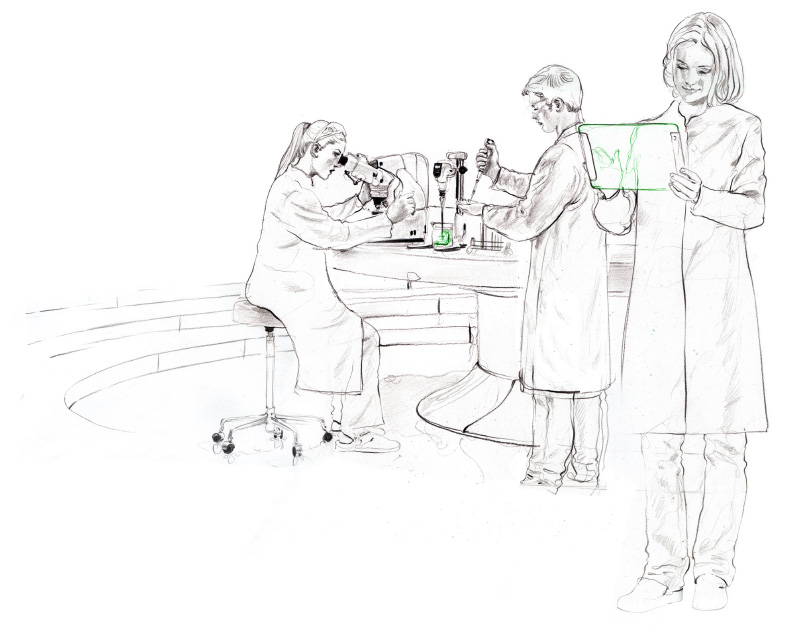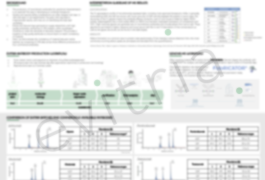Frequently described as the “workhorse” for therapeutic protein production, Chinese Hamster Ovary (CHO) cells remain the most commonly used mammalian host for large-scale protein production. The majority of recombinant biopharmaceutical proteins, most of which are monoclonal antibodies, are produced using CHO cells.
CHO cells possess several characteristics that make them highly adaptable for industrial-scale protein production, including: (i) their ability to produce recombinant proteins and antibodies with post-translational modifications highly compatible with humans, (ii) CHO cells grow in suspension, in serum-free and chemically defined media devoid of animal-derived components — which maximizes suspension growth in bioreactors and improves batch-to-batch consistency, and (iii) highly amenable to processes due to their tolerance of genetic manipulation.
In this blog, we set out main reasons why CHO cells are our go-to cell type for recombinant protein and antibody production.
Derived from epithelial cells from the ovary of the Chinese hamster, CHO cells are an immortalized cell line routinely employed for therapeutic protein production. The cell line was first established in the 1950s by Theodore Puck at the Roosevelt Institute for Cancer Research, who was keen on the Chinese Hamster model. Their low chromosome number made them a good model for cytogenetic and tissue culture experiments.
Subscribe to our Newsletter
Get all the latest updates, and learn about our advancements in antibody production.
Subscribe now
Puck could culture ovary cells in an adherent culture grown on a glass surface and maintain long-term cultivation of the cells. Puck and co-authors observed that the cells grew “excellently”, with “no diminution in growth rate or cellular and colonial morphology”1. These characteristics made CHO cells highly adaptable to biomedical research.
The first FDA-approved recombinant protein — tissue plasminogen activator (TPA) (trade name: Activase) from Genentech — was produced using CHO cells and approved in 1987 for treating patients with Acute Ischemic Stroke2. Currently, 70% of all approved recombinant protein production relies on CHO cells3, including seven of the top 10 drugs by global sales, which are monoclonal antibodies45.
Different variants have been subcloned since the original CHO cell line was described. One commonly used cell line is CHO-DXB11, which is deficient in dihydrofolate reductase—an enzyme responsible for folate synthesis and linked to the synthesis of glycine, purine, and thymidine.
As DHFR-deficient CHO cells are auxotrophs [lost the ability to synthesize certain substances required for the growth due to mutations] for glycine, hypoxanthine (a purine derivative), and thymidine (GHT), this cell line has proved indispensable for screening and selecting heterologous genes containing a functional copy of the DHFR gene. Clonal selection utilizes growth media devoid of GHT, with the surviving cells containing the gene of interest and DHFR genes in their genomes.
An additional advantage of CHO-DXB11 is they can undergo amplification, which increases the selection pressure to favor high expression of the desired gene. Culturing cells in high levels of the folic acid analogue methotrexate (MTX) blocks DHFR activity. Therefore, low-level DHFR activity is insufficient, and only high-expressing clones are isolated.

Although the original CHO cell line was adherent, the CHO-S lineage was adapted for growth in suspension. Suspension cells are essentially single or group cells floating in culture media. Their anchorage-independent properties mean that they are not limited by the area of the substratum available for growth, making them ideal for large-scale culture.
Additionally, suspension cells do not need to be dissociated to be maintained. For commercial biomanufacturing, suspension CHO cells are preferred because of improved handling, productivity, and scalability. The processes involved in maximizing the growth of CHO suspension cells in bioreactors involve retaining cells inside the bioreactor while removing waste media and replenishing cells with fresh media.
One of the highest costs associated with biomanufacturing is the cost of the media and supplements, the latter of which is derived from animal sera. Another problem with animal sera is product variation, which arises from factors such as age and geographical origin.
Using serum-free and chemically defined (CD) media reduces batch-batch variability and manufacturing costs and lowers the risk of infectious agents and contamination. One key characteristic of CHO cells is their ability to grow in CD medium without animal-derived products, described as early as 1965 by Ham et al., and others678.
Culturing CHO cells in a serum-free medium also allows cells to detach from surfaces and float, which is beneficial in creating high-density suspension cultures in bioreactors.
Post-translation modifications—such as glycosylation—of recombinant biopharmaceuticals are essential for their efficacy, antigenicity, and serum half-life. A recent example is the glycosylated human-mouse chimeric IgG1κ monoclonal antibody Siltuximab, produced in CHO cells and targeting soluble human IL-6. CHO cells produce human-like glycosylation, which makes the generated products more compatible and bioactive in human hosts9.
Additional considerations of employing CHO cells are the cell type may produce glycosylated structures at very low levels that are not present in humans – such as N-glycolylneuraminic acid (Neu5Gc) and galactose-α1,3-galactose (α-gal), which can elicit immune responses in humans1011.
Clonal stability of CHO culture, which can lead to phenotypic drift, is another area that requires verification when employing CHO cells. Therefore, characterization and monitoring of the glycosylation profile and cell line stability to ensure consistent manufacture of biotherapeutics in CHO cells remains vital.
Since the 1980s, the strong safety profile of CHO cells has been extensively validated by the Food and Drug Administration (FDA) and European Medicines Agency (EMA)’s regulatory, safety, and quality requirements. Many human pathogenic viruses, including HIV and influenza, have been shown to be unable to replicate in CHO12, meaning that contamination of CHO DNA is negligible in downstream purified products.
As a leading service provider for recombinant antibody expression in CHO cells, evitria combines Swiss thoroughness with an innovative spirit.
In line with the requirements of today’s market, the objective is to offer both fast project execution and the highest quality standards, in other words, Maximum quality delivered in a minimum of time:
Fast execution from initial idea to purified antibody
… applies to all phases from project inception to shipment of the final product:
Highest quality standards …
… are adhered to and delivered throughout all processes of every project. evitria focuses on one service, namely, the transient antibody expression in CHO cells. This allows customers to expect guaranteed delivery with respect to:
From the Swiss headquarters, evitria delivers worldwide and provides high-quality CHO cells for use in an ever-growing portfolio of biotech drugs.
For more information about our Recombinant Antibody Expression service, please get in touch.
The production of high quality, reproducible material is critical for the development of antibody-based therapeutics. The evitria-Genovis workflow combines rapid, high quality, antibody production with high-throughput mass spectrometry for greater insight and control of key quality attributes.
Download the poster to learn more.
